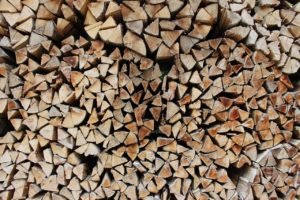Timber is wildly used in construction from ancient times. It can be used at the time of construction like shuttering material, Scaffolding, formwork, etc. Timber is also used in furniture and door and may decorative work. Basically timber is an inevitable material for construction. So study of timber is very necessary.
Mainly there are two types of trees which are trees which grow out words and others which grow inward. Trees grow outwards are called exogenous and trees grow inward are called endogenous.

Exogenous
This trees these trees grow outwards. There are also two types of exogenous trees.
- Codifiers
These trees are evergreen trees. It produces softwoods and shows annual rings that are the age of the tree that can be predicted from its annual rings. They did not show medullary rays.
Ex. chir, pit, koli, pine, deodar.
- Deciduous
These trees are not evergreen. Their leaves fall in autumn and reproduce in springs. They do not show annual rings but shows medullary rays.
Ex. Cane,palm,bamboo.

Structure of Tree
- Bark
It is the outside layer of the trunk, branches, and twigs of trees. Its service serves as a protective layer for the inside wood of the tree.
Trees actually have inner bark and outer bark. The inner layer of bark is made up of living cells and the outer layer is made of dead cells. The inner layer of bark is also so-called as Phloem. The main function of the inner layer is to carry Sap full of sugar from the leaves to the rest of the tree.
- Cambium
The thin layer of living cells just inside the bark is called cambium. The function of cambium is to produce new cells and help the tree to grow wider. It can be also said that it is pre material yet to be converted to SAP wood.
- Sapwood
It is made up of a network of living cells that bring water and nutrients up from the roots to the branches, twigs, and leaves. it is the youngest wood of a tree. after a time period of years sapwood dia to became heartwood. It is also called as alburium.
- Heartwood
It is dead sapwood in the center of the trunk. It is the hardest part of wood giving it support and strength. It is usually darker in color than the sapwood. It does not play any active roll in the growth of the tree. it consists of inner annular rings around the pith.
- Pith
It is the tiny dark spot of spongy living cells writes in the center of the tree trunk. Essential nutrients are carried up through the pith.
Defects in a timber
- Heart shake
It usually occurs in matured trees. It is due to the shrinkage of heartwood.
- Star shake
It is caused by CVR heat of the sun and it affects sapwood.
- Knot
This is caused by the roots of small branches of a tree that form circular rings. The not maybe a live knot or dead knot.
- Dry rot
This effect is caused by fungus where there is no free circulation of air or dampness is the main cause
- Wet rot
It occurs due to alternate drawing and wetting of timber. It converts timber into powder form.
- Honeycombing
This is caused due to improper seasoning offer timber.
- Foxiness
This effect defect is caused due to over maturity and unventilated storage of wood during its transit.
- Cup shake
This defect is called a by strong winds that sweat the tree due to excessive Frost which effects of moisture present in the tree when it is still young.
Seasoning of timber
To process of seasoning of timber. Natural seasoning and artificial seasoning.
- Natural seasoning
This method of seasoning it’s simple and ships cheap but it is very slow it requires 3 to 5 months.
In this process, timber is kept in a shade at about 30 cm high above the ground level. Care is taken to see that there is proper air circulation. Naturally, the moisture content in timber reduces. A well-seasoned timber contents only 10 to 20% moisture.
Artificial seasoning
It is the quickest method of wood seasoning and keeps the moisture content under control. Intex 4 to 5 days to complete under normal conditions. The section of timber obtained is uniform and even. There are also different types of artificial seasoning like Boil seasoning, kiln seasoning, chemical seasoning, and electrical seasoning.
- Boiling
In this method, timber is immersed in water and then it is boiled for 3 to 4 hours. after boiling it is dry slowly. the process of seasoning is fast but costly and if not controlled closely then timber will get breaked.
- Kiln seasoning
In this method, timber is kept in the oven for about 12 to 20 days. the temperature is control controlled at about 35 to 38 degrees Celsius.
- Chemical seasoning
In this method, timber is immersed in a solution of salt and then dried in a kiln.
- Electrical seasoning
This is most rapid method of seasoning and costliest then and other methods. In this method, an electric current is passed through the timber. As moisture content releases the resistance reduces.
